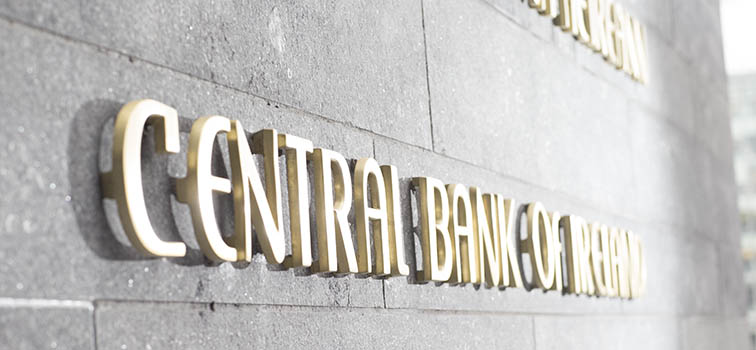Irish farming stronger in recent years, but Brexit and profitability pose risks
18 September 2018
Press Release

- Gross output of Irish agriculture up 21% since 2010
- One in 12 employed in agri-food nationally, rising to as many as one in seven in border region
- Though exports to non-EU markets have risen since 2005, a hard Brexit poses considerable challenges.
The Central Bank of Ireland has today published new research on the economic impact of Irish agriculture and the challenges facing the sector. To launch the research Deputy Governor, Sharon Donnery, visited the National Ploughing Championships 2018 and the Central Bank’s exhibition.
An Economic Letter (PDF 1.08MB) by Central Bank economist Thomas Conefrey finds that following a period of stagnation from 1990 to 2010, agricultural output has increased significantly over recent years. However, the research also identifies a number of challenges facing the industry, including profitability, Brexit, possible future Common Agricultural Policy (CAP) reform and climate change.
The key findings of the research are:
- In 2010, the value of agricultural output in Ireland was €5.5 billion, only marginally higher than the value of output achieved in 1995 (€5.2 billion), a decade and a half earlier.
- In 2017, the overall volume of gross output in agriculture was 21% higher than in 2010; in value terms, output increased 46% to just over €8bn. Much of the rise in output has been driven by the dairy sector following the removal of milk quotas in 2015.
- In the border region, more than one in seven workers is employed in the agri-food sector, almost twice the national average of one in twelve. In the Midlands, Mid-West and South-East, around one worker in every eight is employed in the sector.
- Around two-thirds of farms have no farm business related debt, although variations among sub-sectors are again apparent. 60% of dairy farms have debt, compared to one-third of cattle farms.
- In 2017, just over 40% of agri-food exports went to the United Kingdom. The importance of the UK market varies for particular sub-sectors with cereals (c.90%) and fruit and vegetables (84%) heavily dependent on this market. Dairy (c.35%), beverages (c.21%) and fish (c.10%) are, among others, less exposed.
- Tariff and non-tarrif barriers (i.e. border delays) associated with a hard Brexit, coupled with existing viability problems, would pose significant challenges, with the beef sector particularly vulnerable. Existing Central Bank research finds that potential delays as a result of non-tariff barriers could result in an estimated 9.6% decline in overall trade (imports and exports) between the UK and Ireland.
- However, the growth in exports to both the EU excluding the UK and outside the EU over recent years is notable. In 2005, exports destined for non-EU countries accounted for 21% of the total; in 2017 this figure had risen to 31%. This points to a degree of greater diversification in market sales by Irish exporters.
- Since 2005, payments as part of the European Union’s Common Agricultural Policy (CAP) have, on average, accounted for 74.3% of farm income. In 2017, direct payments accounted for 22% of farm income on dairy farms; on cattle and sheep farms, CAP payments accounted for 114% and 115% respectively. High reliance on direct payments reflects the viability challenge faced by some farmers.
- CAP expenditure as a share of the overall EU budget has declined sharply over time, from 73% in 1985 to 41% in 2016. In addition, the European Commission has proposed a 5% reduction as part of the next CAP budget. It is likely that the EU budget will be negatively affected by the UK’s departure from the EU with the loss of the UK’s net annual contribution.
Commenting on the research, Deputy Governor Sharon Donnery said:
“Agriculture makes a significant contribution to the Irish economy. Employing more than one in seven people in some regions, it is clear that the sector plays an important role in many of our rural communities.
“However, Brexit continues to pose huge uncertainty to the Irish economy overall, and today’s research spells out the specific challenges faced by those working in the agri-food sector across the country.
“The increase in exports to markets outside the UK is to be welcomed and can be built upon, but the fact remains that a hard Brexit which reduces market access for Irish exports would have a material negative effect on Irish agriculture and adjusting to this in the short-term would prove a considerable challenge. Once again, this serves to underscore the importance of progress in negotiations as the March 2019 deadline fast approaches.”